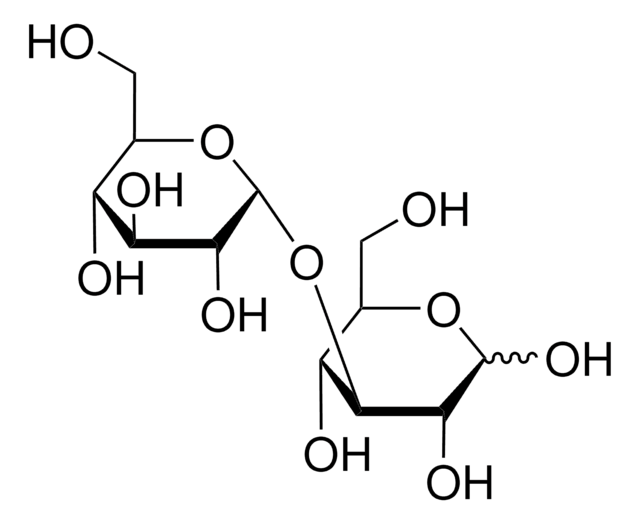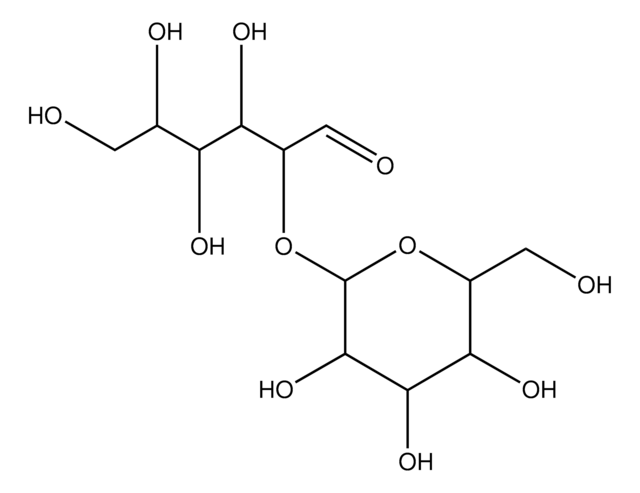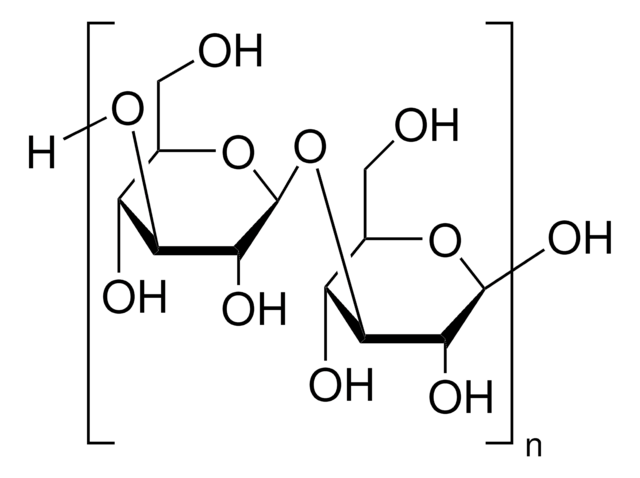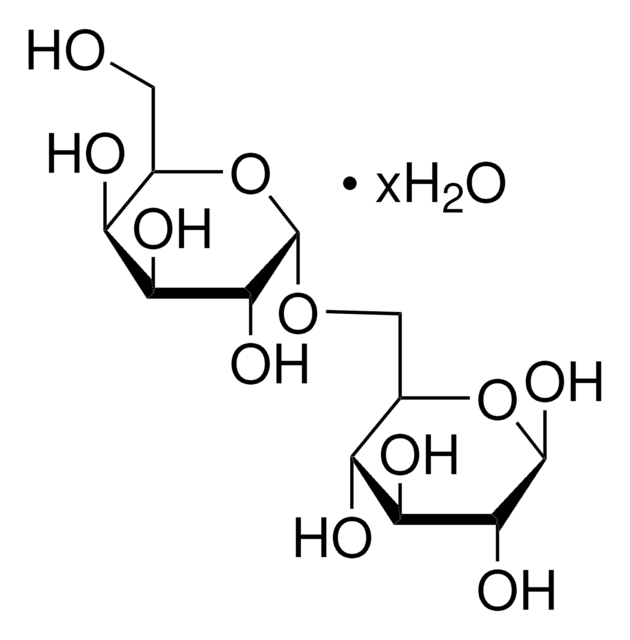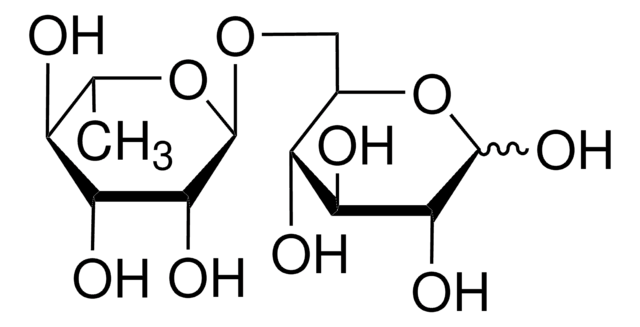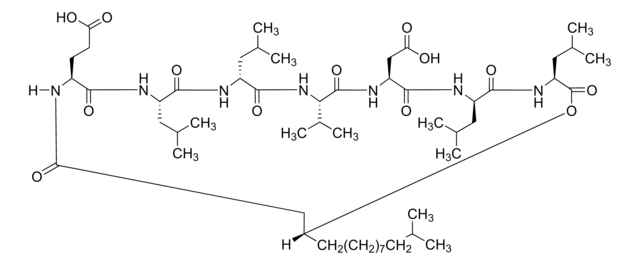S1404
Sophorose
≥98% (HPLC, anhydrous)
Sinonimo/i:
β-D-Glc-(1→2)-D-Glc, 2-O-β-D-Glucopyranosyl-D-glucopyranose
About This Item
Prodotti consigliati
Saggio
≥98% (HPLC, anhydrous)
Stato
powder
tecniche
HPLC: suitable
Impurezze
≤8% water (Karl Fischer)
Colore
white
Solubilità
water: 50 mg/mL, clear, colorless
Temperatura di conservazione
−20°C
Stringa SMILE
O[C@H]([C@H]1O)[C@@H](O[C@H](CO)[C@H]1O)O[C@@H](C=O)[C@@H](O)[C@H](O)[C@H](O)CO
InChI
1S/C12H22O11/c13-1-4(16)7(17)8(18)5(2-14)22-12-11(21)10(20)9(19)6(3-15)23-12/h2,4-13,15-21H,1,3H2/t4-,5+,6-,7-,8-,9-,10+,11-,12-/m1/s1
PZDOWFGHCNHPQD-VNNZMYODSA-N
Altre note
Codice della classe di stoccaggio
11 - Combustible Solids
Classe di pericolosità dell'acqua (WGK)
WGK 3
Punto d’infiammabilità (°F)
Not applicable
Punto d’infiammabilità (°C)
Not applicable
Dispositivi di protezione individuale
Eyeshields, Gloves, type N95 (US)
Scegli una delle versioni più recenti:
Possiedi già questo prodotto?
I documenti relativi ai prodotti acquistati recentemente sono disponibili nell’Archivio dei documenti.
I clienti hanno visto anche
Il team dei nostri ricercatori vanta grande esperienza in tutte le aree della ricerca quali Life Science, scienza dei materiali, sintesi chimica, cromatografia, discipline analitiche, ecc..
Contatta l'Assistenza Tecnica.